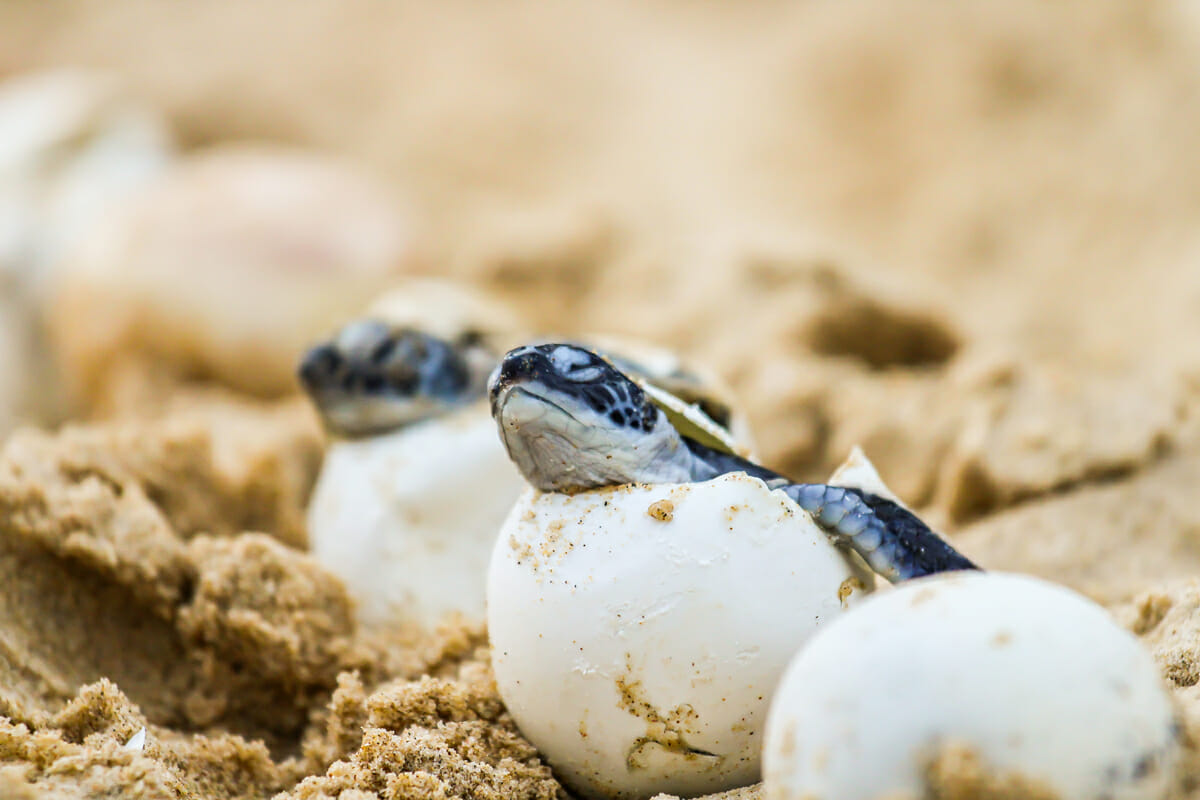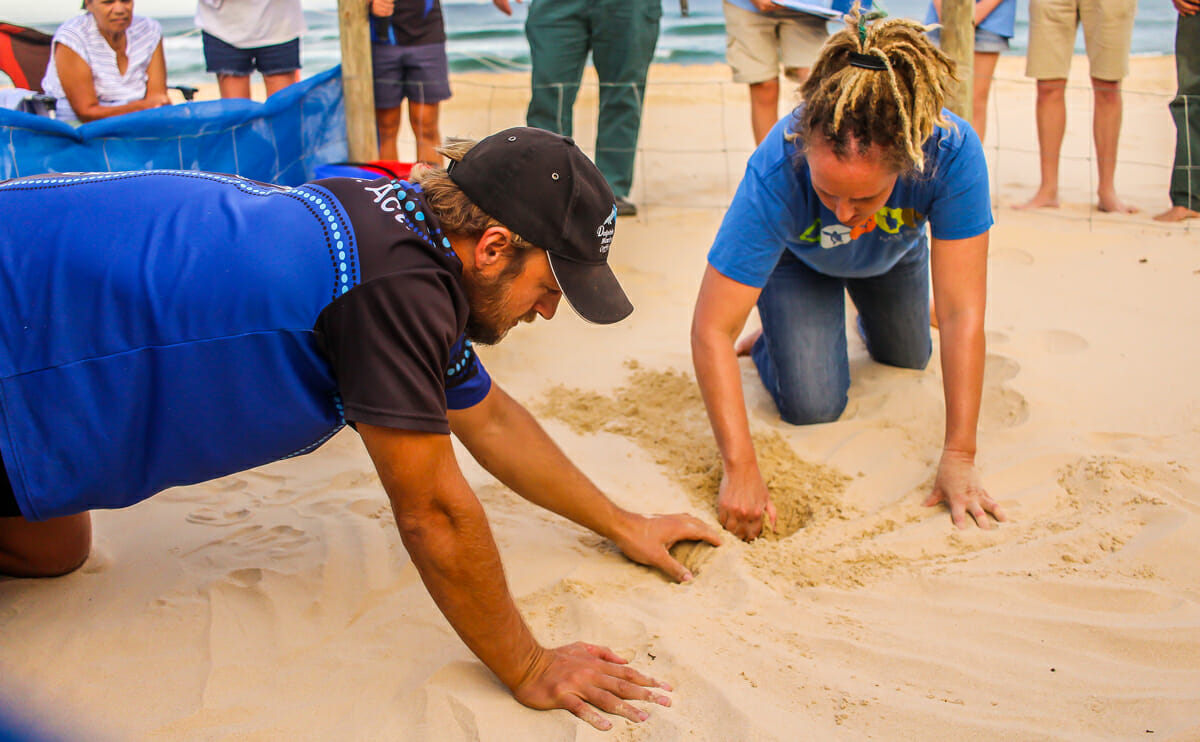Turtle tales: surviving against all odds
Catching a glimpse of beautiful moments in nature often comes down to being in the right place at the right time; a whale breaching, a dolphin surfing a wave or in the case of a local National Parks and Wildlife Field Officer, a female green turtle laying her eggs while you’re out fishing.
While spotting a whale or a dolphin has little consequence, knowing the location of a green turtle nest has ramifications for the survival of an entire species.
“Michael should have bought a lottery ticket,” says sea turtle biologist, Holly West. She’s referring to the off-duty NPWS officer who, while doing a spot of sunrise fishing on Boambee Beach in January this year, was lucky enough to spot a female green turtle laying her eggs.
According to Holly, this isn’t a regular occurrence, especially along the NSW coastline, and provides the hatchlings a significant helping hand in ensuring their survival.
“While sea turtle nesting numbers have been slowly increasing in NSW, nests are still quite rare and generally go unrecognised or may be in remote locations,” she says. “Knowing where the nest was meant we could carefully monitor the area and remove any possible threats.”

Hatchlings emerge from the eggs. Image by Bryce Forrest
It must have been fate because what followed in the coming months was nothing short of miraculous.
Not long after the nest was laid, there was an unexpected king tide. “We were really worried that the eggs had spent too long underwater and weren’t actually going to hatch. The developing embryos need to breathe. If they’re submerged in water for too long, there’s a good chance they’ll drown,” says Holly.
With the looming threat of more high tides, National Parks and Wildlife Service (NPWS) staff and volunteers worked quickly and tirelessly to sandbag around the nest, giving the hatchlings the best possible chance. Of course, everyone hoped for the best.
And then, during a scheduled patrol one morning, a volunteer spotted a set of hatchling tracks coming out of the nest. While the turtle eventually made it down to the water, the track marks showed the little creature had gone around and around in circles.
“These little guys are really fighting all odds just to make it to the water’s edge,” says Holly. “When a hatchling comes out of the nest, they automatically look for the brightest light. Historically, the moon over the water or horizon would have been the brightest light and would ensure they made it to the ocean. However, when you hatch in a busy spot like Boambee Beach, there are lights everywhere. Because of this, the hatchlings get really disoriented and often use up the precious little energy they have, going around in circles.”

Dr. Duan March and Holly West excavating the nest on Boambee Beach, Coffs Coast
The following day, the team found another two hatchling tracks that spun in similar circles – they even found one hatchling still wandering the beach at sunrise.
It was at this point that Holly, Marine Expert Dr Duan March and NPWS put their heads together and decided to excavate the nest, giving any remaining hatchlings the best chance of survival.
And the result? “We found a few and then we dug another little pocket and all of a sudden there were about 70 turtles trying to crawl out!” says Holly.
The hatchlings were fit and healthy and could be released on the beach at sunset to make their heroic dash to the water.
Ann Walton from NPWS says the Boambee rescue would not have been possible without the help of local experts. “With Duan’s expertise and Holly here too, who has so much experience on turtle management from around the world, was just the best thing.”
Almost all sea turtle species are listed as either endangered or threatened, primarily due to human impacts. Holly believes that by ensuring the survival of 70 vulnerable green turtle hatchlings, a significant contribution was made to the future of the population.
Global warming and rising sea temperatures also have a huge impact on the species – with the sex of the developing hatchling being determined by the temperature of the nest.
“Warm sand temperatures produce primarily females and cooler sand temperatures produce mostly males. Our major northern nesting beaches are producing predominantly females,” says Holly before adding, “This is where those more southern nesting beaches – like Coffs Harbour – are going to play an important role in putting males back into the population.”
The region was actually home to three green turtle nests last season; one at Boambee, another at Bongil Bongil and a third nest at Yuraygir.
For those feeling lucky enough to catch a glimpse of these wonderful creatures in action, Holly recommends keeping your eyes peeled around late October, early November. And should you be blessed by a green turtle sighting, keep in mind Holly’s wise words – “Remember to be respectful and if you do see something, let a ranger know.”
For more information or to support conservation efforts go to Sea Turtle Foundation.




